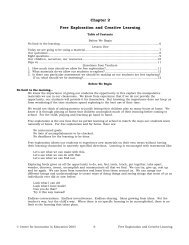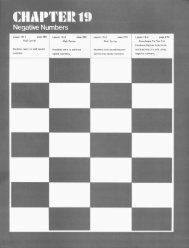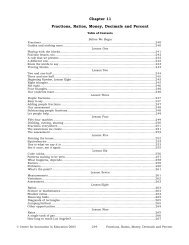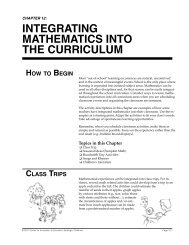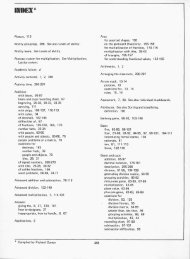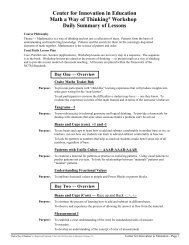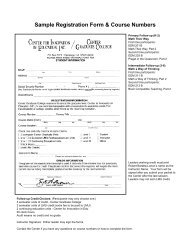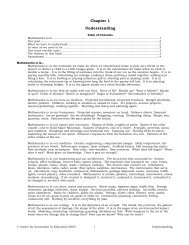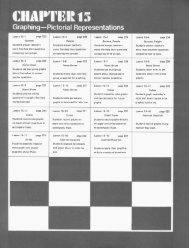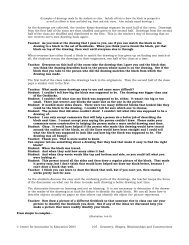PLACE VALUE MAtEriALs - Center for Innovation in Education
PLACE VALUE MAtEriALs - Center for Innovation in Education
PLACE VALUE MAtEriALs - Center for Innovation in Education
You also want an ePaper? Increase the reach of your titles
YUMPU automatically turns print PDFs into web optimized ePapers that Google loves.
Chapter 11: Place ValuePlace Value ManiPULA tivesPlace value manipulatives fall with<strong>in</strong> two dis t<strong>in</strong>ct de velopmentallevels: concrete and rep resentational. Con crete place value experiencesmust come first. Representa tional activities are appropriate later <strong>in</strong> theelementary grades — after children have engaged <strong>in</strong> a variety of experienceswith concrete materials.Concrete MaterialsConcrete materials — beans and cups and Unifix cubes — allow thechildren to construct group<strong>in</strong>gs. Experiences with these materialsstress one-to-one correspondence be tween the number and the materialit represents.Kathy Richardson addresses the issue of one-to-one corre spondenceat the place value level <strong>in</strong> her book, De velop<strong>in</strong>g Number Concepts Us <strong>in</strong>gUnifix Cubes (Chapter 5, p. 133):Count<strong>in</strong>g groups [of objects] requires a dif ferent k<strong>in</strong>d of th<strong>in</strong>k<strong>in</strong>gfrom count<strong>in</strong>g s<strong>in</strong> gle objects. Children’s first count<strong>in</strong>g experiencesrequire an understand<strong>in</strong>g of one-to-one correspondence.They learn that one num ber word goes with one object. But,when deal<strong>in</strong>g with numbers above ten, children are requiredto count groups as though they were <strong>in</strong>dividual objects. Thequestion “How many tens <strong>in</strong> thirty-four?” as sumes the child canconceive of ten objects as one en tity. The question “How manyhundreds <strong>in</strong> 346?” as sumes the child can conceive of one hundredob jects as one group (all the while remem ber<strong>in</strong>g that eachhundred is also ten groups of ten).Representational MaterialsBean sticks and multi-base blocks are “fixed” materials. The materialsimpose a ready-made structure on the stu dent. Although childrenmanipulate materials — e.g., chips, multi-base blocks and bean sticks— they are re quired to th<strong>in</strong>k abstractly. A child with <strong>in</strong>suffi cient experiencesus<strong>in</strong>g concrete materials may be confused when a numberis represented by multi-base blocks. They must already under standthat one block <strong>in</strong> base ten represents ei ther ten flats, a hundred longs,or a thousand units. Rather than understand<strong>in</strong>g that a num ber like362 is rep resented by three flats, six longs, and two units, a child mayonly see eleven separate blocks of vary<strong>in</strong>g sizes.Chip trad<strong>in</strong>g is also representational but at a more ab stract level.Children must be able to understand the “abstraction” that one chipcould represent a group of ten or a hundred chips (chips can alsorepresent group<strong>in</strong>gs <strong>in</strong> other bases). The necessity <strong>for</strong> children to besurrounded with an abundance of concrete ex periences be<strong>for</strong>e theymove on to representa tional materials cannot be empha sized stronglyenough.Page 11.2© 2011 <strong>Center</strong> <strong>for</strong> <strong>Innovation</strong> <strong>in</strong> <strong>Education</strong>, Saratoga, Cali<strong>for</strong>nia




